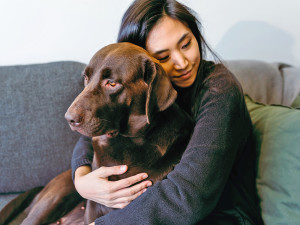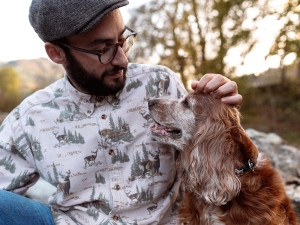Fostering a Dog for Even a Couple Days Increases Their Chances of Adoption, Study Says
Even a small amount of quality time makes a huge difference to shelter pups.
So many dogs in shelters need homes, but you can’t personally adopt them all — unfortunately. Even if you managed to find a partner who agrees with you when you say, “There’s always room for one more,” there really isn’t room for countless more in your house. Ugh, I hate sounding like such a realist. Luckily, even without adopting more and more and more dogs, there’s something people in communities everywhere can do to help dogs get adopted: Take them out of the shelter for a short time.
By “short” I mean a few hours up to a day or two, because that’s all the time it takes to radically increase a dog’s chances of joining a family. This isn’t just a vague feeling that makes me say this. It’s based on research.
Trick question: All dogs are perfect! But find out which type is the best fit for you.
Outings away from the shelter that take dogs out of their kennels and into the lives of attentive, loving people are powerful. They offer dogs a break from the loud, stressful environment of a shelter and spend some time with people giving them love, affection, and attention. Those experiences add joy to their lives, and studies have shown their stress, as measured by the levels of cortisol in their bodies, is lowered considerably.
The stats prove fostering (or spending time with) dogs help them get adopted.
It’s more likely that an animal gets adopted if they are fostered or even just given attention from a volunteer. In a November 2023 studyopens in new tab of nearly 28,000 dogs from 51 shelters, researchers found that the chances of being adopted went up considerably after dogs had a one-to-two-night foster stay in a home or went on an outing for a few hours.
How much do you spend on your pet per year?
Dogs with an overnight foster experience were 14 times more likely to be adopted than dogs who remained at the shelter, and dogs who were on an outing of a few hours or so were five times more likely to be adopted than dogs who did not get to leave.
The positive impact of outings of just a few hours on dog-adoption rates is important for shelters seeking to improve outcomes for their dogs. Many people are hesitant to foster a dog, even for a couple of days, because they worry about becoming too emotionally attached, and also because it can be a lot of work to house a dog overnight. That’s why it’s so valuable for shelters to know that shorter outings help many dogs find homes and offer that as an option to volunteers who don’t want to commit to full-time fostering.
These findings mean shelter dogs will actually get adopted.
There are two aspects of the welfare of dogs in shelters. One part of assessing their wellbeing has to do with the mental state they are in while they are in the shelter, which is a stressful place for dogs. Interactions with people often help them in the short-term, but once they are back in the kennel, they return to their previous level of stress.
The other aspect has to do with how long they are in the shelter before going to live permanently with a family (or not making it out, sadly) which is the ultimate goal of sheltering dogs in the first place. There are a lot of qualities about each dog that can impact their likelihood of adoption, such as whether they are a puppy or not, their overall appearance, size, and type of fur. Very few actions by the shelter staff of volunteers consistently increase the chance of a positive outcome for the dog.
That’s what makes this study so exciting — it reveals a way that shelters can make a difference in the lives of dogs by making adoption by a family more likely. Programs that involve the community in taking dogs on outings and in fostering them are effective and lead to positive outcomes for dogs and, of course, for the families who adopt them.
In a few cases during the study, the foster family adopted the dog, but in most cases, those adopting were other families entirely. The outings offered dogs exposure to the community. They were out in neighborhoods, meeting new people, and their stories were shared by the foster families. All these connections increased their chances of being seen, chosen, and adopted by someone in the community. It makes sense, so it may not be surprising, but it is inspiring.
My personal experience: This works.
I used to participate in a program in my community called Running Buddies, though unfortunately it’s no longer offered. Each week, members of the community met at the local running store and took shelter dogs out for a run.
They wore vests that said, “Adopt Me” and I was regularly stopped by people inquiring about the dog at the other end of my leash. Sure, a few runners met their best friend during the program and adopted the dog they ran with. But mostly it was other people who saw a dog, met them, and then went to the shelter to officially make that pup part of their family.
The investment in and results from the study allows shelter directors to focus on programs, like Running Buddies, that involve the community and help dogs. That’s important, because no matter how much you may be thinking otherwise, you can’t personally adopt them all.











